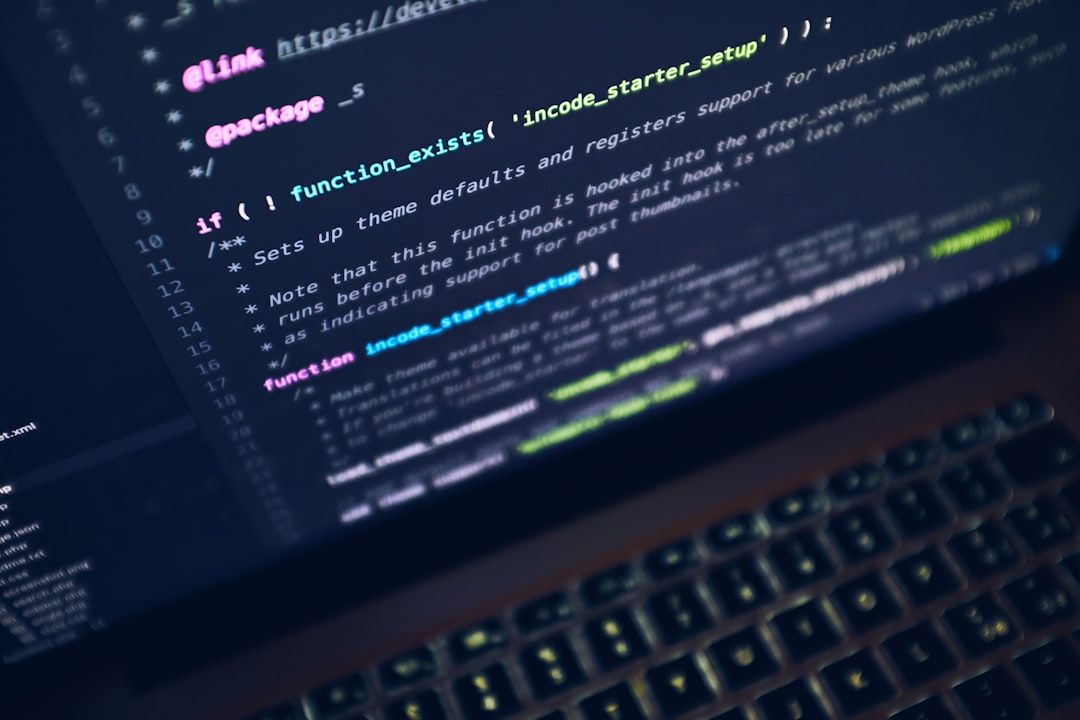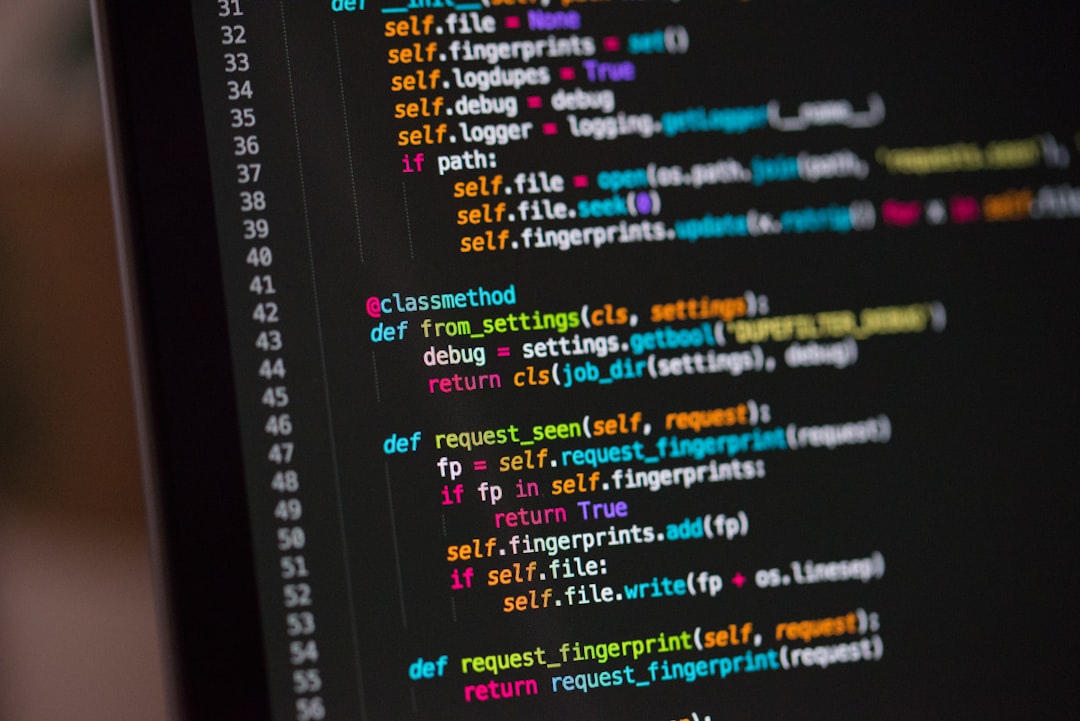Debugging is an essential part of software development, yet it is often overlooked or rushed through. A bug in the code can cause major issues and affect the user experience, resulting in a loss of trust in the software and the company that produces it. Efficient debugging is critical to ensuring that our code functions as intended and meets the needs of our users.
In today’s fast-paced technology-centered world, customers expect seamless experiences with software products. Any disruption, small or big, can lead to dissatisfaction, bad reviews, and lost revenue. Therefore, debugging is not only essential from a technical standpoint but also a business perspective.
Moreover, debugging is an iterative process that requires patience, persistence, and attention to detail. Every error is unique and requires a unique approach to be solved. Therefore, it is crucial to have a systematic approach in place to ensure an efficient and effective debugging process. This can save a lot of time, effort, and resources in the long run.
In this blog post, we will explore the basics of debugging, common debugging tools and techniques, debugging strategies, effective communication with your team, best practices for staying organized, and continuously improving your abilities. Understanding and implementing these concepts can improve the quality of your code, enhance the user experience, and help you become a better developer. So let’s get started!
Getting Started: Understanding the Basics of Debugging
Debugging is an essential part of software development, and it can be challenging even for experienced programmers. However, it is a crucial skill that must be learned and mastered to be successful in this field. Debugging often involves performing an analysis of a problem, identifying the root cause, and implementing a solution. This section will focus on the basics of debugging and the importance of developing strategies and techniques to improve your debugging efficiency and accuracy.
Before we can begin to understand debugging, we need to understand what a bug is. In software development, a bug is a flaw or defect in the code that produces an unwanted result. Bugs can manifest themselves in various ways, including system crashes, incorrect output, or unexpected behavior.
The first step in debugging is identifying the problem. Without knowing what the issue is, it is impossible to fix it. This can often be the most challenging part of debugging, as the problem may not always be apparent or easy to reproduce.
Once the problem has been identified, it is time to start the investigation. This process may involve analyzing logs or relevant pieces of code to find the root cause. One common strategy is to use breakpoints to pause the program’s execution and inspect the state of various variables to help identify where the problem occurs.
Once the root cause has been identified, it is time to implement a solution. This phase could involve refactoring the code or even rewriting a particular module or a function. Testing the changes is also important to ensure that they have fixed the problem without introducing new issues.
Overall, understanding the basics of debugging is essential to becoming a skilled software developer. By learning the strategies and techniques involved in the debugging process, you can approach debugging with more confidence, accuracy, and efficiency, ultimately leading to better software development outcomes.
Testing the changes is also important to ensure that they have fixed the problem without introducing new issues.
Common Debugging Tools and Techniques
When it comes to debugging, having the right tools and techniques at your disposal can make all the difference. Here are some of the most common tools and techniques that developers use to identify and fix bugs in their code:
Debugger
A debugger is a tool that lets you pause the execution of your code at any point to inspect its state. With a debugger, you can step through your code one line at a time, examine the values of variables, and even modify those values on the fly.
Logging
Logging is the practice of adding informational and error messages to your code that get emitted at runtime. With logging, you can get insight into how your code is behaving and identify issues that might not be apparent from the code itself.
Unit Tests
Unit tests are automated tests that verify the behavior of individual components of your code. When you write unit tests, you can catch bugs early and ensure that changes you make to your code don’t break existing functionality.
Code Reviews
Code reviews are a process where one or more developers review the code changes made by their peers to ensure code quality, style, and correctness. Code reviews can catch issues that might be difficult to spot through automated testing alone.
Version Control
Version control is a system for tracking changes to your code over time. With version control, you can easily revert changes that introduce bugs and collaborate with others on fixing issues.
Binary Search
Binary search is a technique for narrowing down the location of a bug in your code. By splitting your code into halves, you can quickly isolate the part of your code that is causing the issue.
By using these commonly-used tools and techniques for debugging, you’ll be well-equipped to identify and fix issues in your code quickly and effectively.
Version Control
Version control is a system for tracking changes to your code over time.
The Art of Asking the Right Questions: Debugging Strategies
Debugging is a crucial step in the software development process. It helps in locating and removing errors, bugs and other issues in a code or application. When it comes to debugging, one fundamental skill developers must possess is the art of asking the right questions. While a lot of developers have mastered the technical requirements of coding, their ability to ask the right questions is something that needs to be continuously sharpened. In this section of the post, we look at some of the important strategies that developers can use to ask the right questions when debugging.
One of the essential strategies in asking the right questions is being specific. When you get an error message, it is essential to be specific about what went wrong. Vague questions like “what’s the problem” or “what’s not working” are not helpful. Instead, it would be best if you were specific about the issue at hand by asking precise questions like “Exactly what step leads to the error?” or “Which line of code is causing the problem?” Being specific will help you get more in-depth information and reduce the time it takes to identify and fix the problem.
Another essential strategy of asking the right questions is to know the domain of the application. When a developer has a good understanding of the application’s domain, they are better equipped to ask the right questions. Such developers can recognize patterns, understand user stories and predict the expected outcome of the code. By understanding the domain, developers can ask pointed and specific questions that help uncover subtle issues that might be challenging to spot.
It is also crucial that developers take a step back and look at the big picture. Questions like “how does this code fit into the broader application,” or “what are the user requirements, and how does this code relate to them” are very efficient in helping developers ask the right questions. By taking a broader view of the code and the application’s domain, developers can spot potential issues that might not be apparent when dealing with the code’s nuances.
Lastly, it is essential to be curious and ask follow-up questions. More often than not, the information you get from the first question might not be enough to get to the root of the problem. It’s important to keep asking follow-up questions, such as “what else happened when this error occurred?” or “have you seen this issue before with a different input?” to get to the bottom of the issue.
In summary, asking the right questions is an essential aspect of efficient debugging. Developers need to master the art of being specific, understanding the domain of the application, looking at the big picture, and being curious enough to ask follow-up questions. By following these strategies, developers can identify and fix problems faster and develop more efficient code.
” Being specific will help you get more in-depth information and reduce the time it takes to identify and fix the problem.
Debugging as Collaboration: Effectively Communicating with Your Team
Debugging can be a challenging task, especially when it comes to collaborating with your team. In today’s technology-driven world, most software development tasks involve teamwork, which makes effective communication critical for success.
When it comes to debugging, it is essential to communicate effectively with your team members. Clear communication helps to ensure that everyone is on the same page, working towards the same goals, and aware of any issues that they may need to tackle.
Here are some tips to effectively communicate with your team during the debugging process:
1. Document the problem: Documenting the problem is a critical step in the debugging process. It helps to avoid misunderstandings and eliminates the need for repetition. When documenting the problem, be clear, concise, and include all relevant details. This documentation can be shared with teammates for reference, ensuring everyone is aware of the issue at hand.
2. Share the code: In many cases, the code is the root cause of the problem. Sharing the code with your team members can help them understand the problem and provide valuable insights. Furthermore, if you are working on the same code with team members, sharing changes made can definitely speed up the process.
3. Use Collaborative tools: Collaborative tools like Slack, Trello, and Jira can help your team to communicate effectively by centralizing all communication and facilitating teamwork. They allow teams to create tasks, assign team members, and update project status effectively.
4. Assign roles and responsibilities: Assigning roles and responsibilities ensures everyone is aware of their role in the debugging process. Individual team members can work towards specific goals, and the process can progress more quickly with the right set of responsibilities assigned to the right people.
5. Hold review meetings: Review meetings are a great way to ensure everyone is working towards the same goal. They are also an excellent opportunity to share updates and establish any necessary clarifications. Hold periodic meetings either in a physical or virtual environment.
In conclusion, effective communication is a critical component in the success of your team’s debugging efforts. With the tips above incorporated into your work process, you can improve communication, hastening issue resolutions and setting an example by being an empowering leader.
In conclusion, effective communication is a critical component in the success of your team’s debugging efforts.
Debugging Best Practices: Staying Organized and Revisiting Issues
Effective debugging requires more than just technical knowledge and skill – it also requires discipline and attention to detail. Once you’ve identified an issue, it’s important to stay organized and focused throughout the debugging process. In this section, we’ll cover some best practices to help you stay organized, track your progress, and make the most of your time.
1. Keep Detailed Notes
When you’re working on a particularly complex issue, it’s easy to lose track of what you’ve already tried and what still needs to be done. To avoid confusion and wasted effort, it’s essential to keep detailed notes throughout the debugging process. This includes a record of any changes you make, any error messages you encounter, and any progress you make along the way. By keeping careful notes, you can avoid repeating the same steps over and over and make it easier to pick up where you left off if you need to take a break or switch to another task.
2. Use a Dedicated Issue Tracker
In addition to keeping notes, it’s also helpful to use a dedicated issue tracker to keep track of bugs, feature requests, and other tasks. This can be as simple as a spreadsheet or as complex as a purpose-built project management tool, depending on the needs of your team. Whatever system you use, make sure it’s easy to use, easy to update, and accessible to everyone who needs it. By maintaining a central repository of all your tasks and issues, you can avoid duplicate efforts and ensure that nothing falls through the cracks.
3. Prioritize Your Tasks
Not all debugging tasks are created equal – some issues are more urgent than others, and some will require more time and effort to solve. To ensure that you’re making the most of your time, it’s important to prioritize your tasks based on their relative importance and difficulty. This can be done in collaboration with your team or on your own, depending on your organizational structure. By focusing on the most critical issues first, you can make sure that your efforts are directed towards the most impactful areas.
4. Test and Verify Your Solutions
Once you’ve identified a solution to a particular issue, it’s important to test and verify that it actually works as intended. This means going through a full testing process to ensure that the issue has been resolved and that no new issues have been introduced. It’s also a good idea to solicit feedback from other members of your team or from your users to ensure that your solution meets their needs and expectations.
5. Continuously Revisit Issues
While it’s tempting to move on to the next issue as soon as you’ve resolved a particular bug, it’s important to revisit issues frequently to ensure that they don’t recur. This means monitoring your system for any signs of regression or new issues and taking proactive steps to address them before they become major problems. By staying vigilant and proactive, you can reduce the overall amount of time and effort required for debugging and ensure that your systems are running smoothly and reliably over the long term.
In summary, effective debugging requires discipline, focus, and attention to detail. By following these best practices for staying organized, prioritizing tasks, and continuously revisiting issues, you can make the most of your time and build more robust and reliable systems over the long term.
In summary, effective debugging requires discipline, focus, and attention to detail.
Conclusion: Debugging as a Skill Set: Continuously Improving Your Abilities
Debugging is not just a task, it is a skill set. As software development becomes increasingly complex, debugging becomes more important than ever. It is a highly sought-after skill set in the industry, as it sets apart an efficient engineer from an inefficient one. By continuously improving your debugging abilities, you can deliver better products and improve your growth as a developer.
One of the key features of debugging is that it teaches you to identify problems and think critically. Debugging involves a lot of patience, persistence and attention to detail. As you solve bugs, you learn not just where things went wrong, but also the reasons behind them. This comprehension of how software works behind-the-scenes not only allows you to solve future bugs more efficiently, but it also helps you write better code from the start.
Debugging is also an opportunity to collaborate and communicate effectively with your team. By sharing insights, logs, and communication, you can work together to identify problems and solve them efficiently. Collaboration creates a culture of learning and growth where team members can learn from each other and enable their own success.
Another aspect of debugging that is often overlooked is revisiting previous bugs. By keeping a record of bug fixes and understanding the issues that have been resolved, you create a more robust and efficient debugging process over time. By learning from past mistakes and bugs, you can identify similar issues before they occur and reduce development time.
Lastly, debugging is a skill set that can be continuously improved. There is always room to learn and grow in this critical area of software development. This could mean learning new debugging tools or techniques, honing your communication skills, or simply challenging yourself to identify bugs faster and more accurately.
In conclusion, debugging is an essential skill set in software development that teaches you to identify problems, think critically, communicate effectively, and continuously improve. By adopting debugging as a continuous learning process, you can stay on top of industry best practices, collaborate with your team effectively, and ultimately deliver better products to users.





